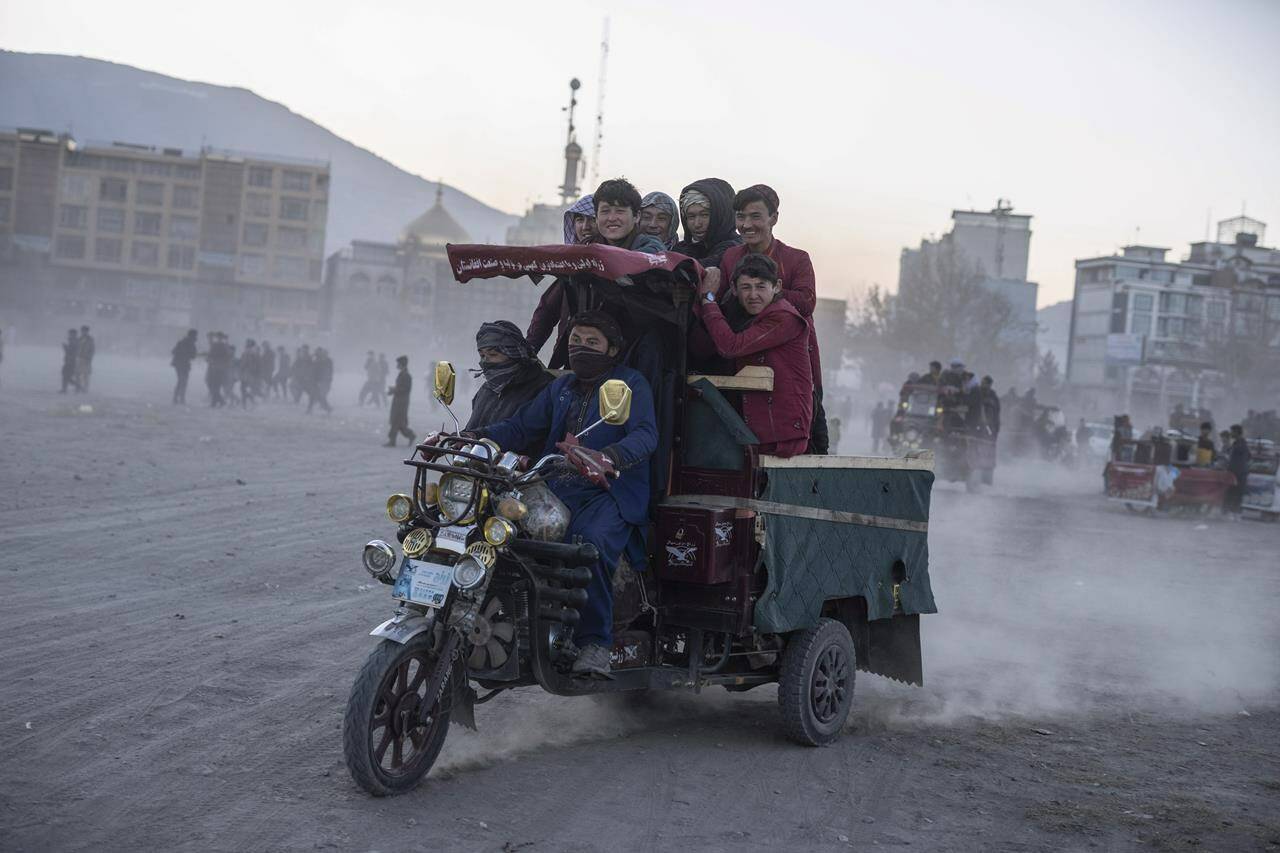As the first snowfall dusted the Afghan capital of Kabul earlier this month, Mary-Ellen McGroarty pondered the rough winter that lay ahead. COVID-19 was far from being top of mind.
Unlike much of the rest of the world where concern over the Omicron-driven fifth wave of the COVID-19 pandemic is paramount, Afghans are far more concerned about the epic starvation they now face, said McGroarty, the Afghanistan country director for the World Food Program.
“It’s snowing today in Kabul. It’s incredibly cold, it’s really miserable,” McGroarty said in a recent interview from the Afghan capital.
“Every time when I’m out and I’m talking to people, the two things are, how am I going to feed my children and how am I going to keep my children warm for the winter?”
Four months after Afghanistan was taken over by the Taliban militia that routed the country’s Western-backed government, extreme hunger and malnutrition threaten 23 million of its citizens, or more than half the population.
The hunger crisis is being driven by a failing economy marked by soaring inflation and a collapsing currency. That means food, and oil and fuel for heating have simply become unaffordable for many Afghans.
WFP and other aid agencies that remain in Afghanistan say it will take US$220 million a month to feed the vulnerable population and cope with the crisis, and they have put out an urgent appeal for funding to governments and private donors.
Canada announced this past week that it was contributing $56 million in humanitarian assistance for Afghanistan in response to appeals by the UN and the International Committee of the Red Cross. That was in addition to the $57 million Canada previously committed this year.
“Millions of people across Afghanistan require urgent assistance and I will do everything possible to get them the help they need. I remain committed to helping the Afghan people,” said International Development Minister Harjit Sajjan, who served three tours in Afghanistan with the Canadian Armed Forces.
In the western city of Herat, any angst about COVID-19 takes a back seat to the food crisis, said Asuntha Charles, the director of World Vision Afghanistan.
Masks are rarely seen in Herat, the country’s third largest city near the Iranian border, and Charles said she regularly reminds her local staff that there is also a pandemic flourishing and to take the necessary precautions.
As of September, one-quarter of the country’s 37 hospitals had closed, while COVID-19 surveillance, testing and vaccination was plummeting. The goal at the time was to vaccinate 20 per cent of the Afghan population by the end of the year, but the most recently available figures suggest less than 10 per cent are fully vaccinated.
“I don’t think anybody in Afghanistan is talking about COVID at this time, except thinking that the whole health sector has collapsed,” Charles said in an interview from Herat. “There’s no medicine for children, there is no heating facility in the hospital. These are the topics that are emerging rather than COVID.”
Charles has travelled throughout the country’s western region where evidence of the food crisis is inescapable. World Vision is operating 14 mobile health centres to treat acute malnutrition, including in internal displacement camps.
“Malnutrition is really growing,” she said. “With so much poverty on the ground, people are trying to sell away the children, they are going to the extent of wanting to sell their body organs like kidneys so that at least other members of the families can survive.”
Charles recalled one woman who recently sought treatment after selling one of her kidneys. She developed an infection because the procedure was done poorly.
“This is how pathetic the situation is on the ground,” said Charles, who has worked for several international organizations in Afghanistan over seven years.
Back in Kabul, the cold winter air was growing thick and polluted with the rancid stench of burning garbage, creating “an onslaught on your lungs” – a new feature of life there since McGroarty arrived in the country to begin her assignment in the fall of 2020.
“People are burning anything to try to keep warm,” said McGroarty.
The fuel for those fires runs the gamut from plastics, garbage and other household waste, to household possessions that haven’t otherwise been sold to buy actual fuel, she said.
That means WFP is seeing many first-time clients seeking food, from middle-class, female-led households to farmers faced with failed harvests, she said.
McGroarty recently spoke to a group of farmers who were openly fearful of the future and questioned whether the recent end to decades of war and violence – a biproduct of the Taliban’s return to power – was actually a good thing.
“They told me in their own words the war was preferable to the torment and the torture of the hunger that they and their families were living through at the moment. I mean, that tells you something.”
McGroarty said she hoped that as Christmas and “the season of goodwill” unfolds in her native Ireland and other Western countries, including Canada, that people would donate money to help avert catastrophe.
“We cannot condemn the children, the future of the country, to hunger and starvation, just by the lottery of birth,” she said.
In Herat, Charles said “my Christmas message for the Canadian population” boiled down to a visit she had just paid to a family with five children. The parents had managed to find carrots in the local market, and the family had been eating them for breakfast, lunch and dinner.
“I was thinking, for Christmas, every family will have so many choices to make, maybe you have chicken, fish,” said Charles.
“So maybe this Christmas would be more meaningful for the Canadian population if they can think of the Afghan population and (be) ready to contribute, so that at least some children will have food on their plates.”
—Mike Blanchfield, The Canadian Press
RELATED: 200 Afghans, including female students and dancers, make daring overland escape

